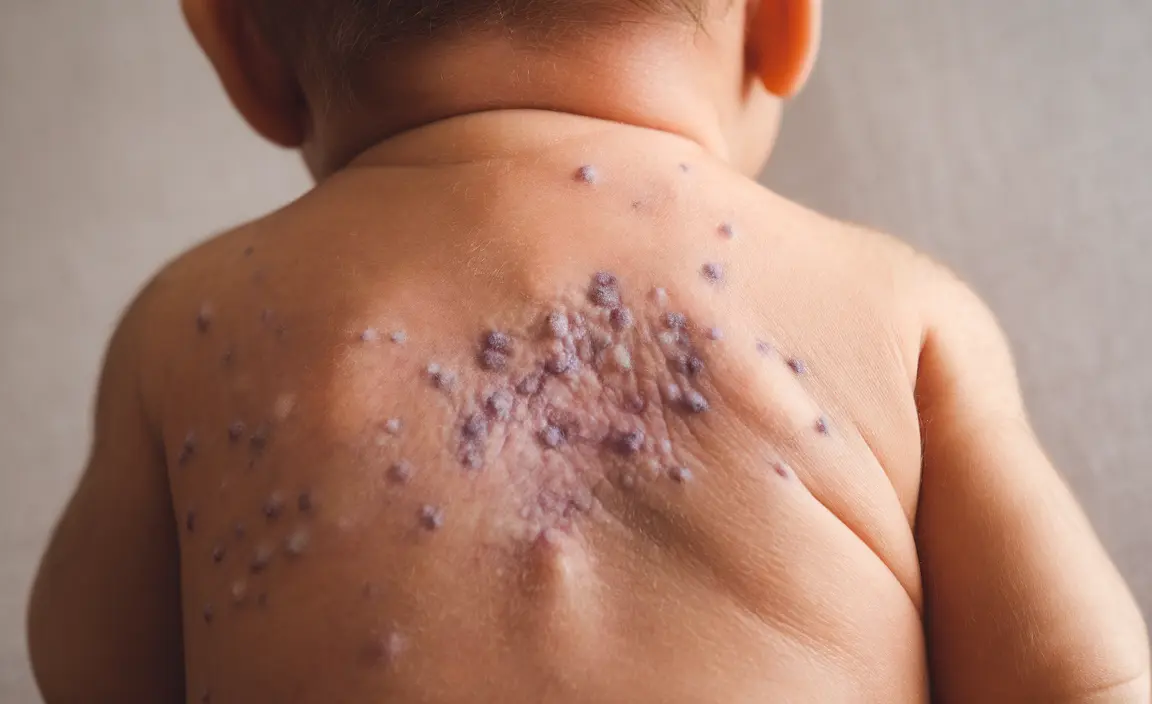A blueberry muffin rash is a rare but significant skin condition that appears in newborns, characterized by purplish-blue spots that resemble the appearance of blueberries in a muffin. This distinctive rash requires prompt medical attention as it can indicate underlying health conditions that need immediate treatment.
Understanding this condition is crucial for parents and healthcare providers, as early detection and proper diagnosis can lead to better outcomes for affected infants. Let's explore the essential aspects of blueberry muffin rash, including its causes, diagnosis, and treatment options.
Understanding Blueberry Muffin Rash
The blueberry muffin rash gets its name from its distinctive appearance - small, round, purplish-blue spots that are scattered across the baby's skin. These spots typically appear at birth or shortly after and can be found on various parts of the body, including the torso, limbs, and face.
These lesions are actually collections of blood cells that form outside their normal location in the body, a condition known as extramedullary hematopoiesis. The presence of these spots can signal various underlying conditions that require medical evaluation.
Common Causes and Risk Factors
Congenital Infections
Several viral infections during pregnancy can lead to the development of a blueberry muffin rash in newborns:
- Cytomegalovirus (CMV)
- Rubella virus
- Epstein-Barr virus
- Coxsackievirus
- Parvovirus B19
Blood Disorders
Various blood-related conditions can manifest as a blueberry muffin rash:
- Hereditary spherocytosis
- Twin-to-twin transfusion syndrome
- Neonatal lupus erythematosus
- Various forms of leukemia
Diagnosis and Medical Evaluation
When a blueberry muffin rash is identified, healthcare providers will conduct a comprehensive evaluation that typically includes:
- Physical examination
- Detailed maternal medical history
- Blood tests
- Skin biopsy (if necessary)
- Additional imaging studies
Treatment Approaches
Treatment for blueberry muffin rash focuses primarily on addressing the underlying cause rather than the rash itself. The approach may include:
- Antiviral medications for viral infections
- Specific treatments for blood disorders
- Supportive care measures
- Regular monitoring and follow-up
Monitoring and Prognosis
The outlook for babies with blueberry muffin rash varies significantly depending on the underlying cause. Some cases may resolve on their own, while others require ongoing medical management. Regular monitoring by healthcare providers is essential to ensure optimal outcomes.
Frequently Asked Questions
1. What are the common causes of a blueberry muffin rash in newborns, and how is it diagnosed? The most common causes include congenital infections (such as CMV and rubella) and blood disorders. Diagnosis involves physical examination, maternal history review, blood tests, and sometimes skin biopsy.
2. How is a blueberry muffin rash treated, and what is the prognosis for infants with this condition? Treatment depends on the underlying cause and may include antiviral medications, specific treatments for blood disorders, and supportive care. The prognosis varies based on the cause but improves with early detection and appropriate treatment.
3. Can a blueberry muffin rash be linked to other health problems, such as blood disorders or cancers? Yes, blueberry muffin rash can be associated with various blood disorders, including certain types of leukemia, hereditary spherocytosis, and other hematologic conditions.
4. What are the typical symptoms that accompany a blueberry muffin rash, and when should I seek medical attention if I notice these signs in my baby? Seek immediate medical attention if you notice purplish-blue spots on your newborn's skin. Additional symptoms may include fever, poor feeding, lethargy, or other signs of illness.
5. Are there any preventive measures that can reduce the risk of a baby developing a blueberry muffin rash due to congenital infections? Prevention focuses on maternal health during pregnancy, including regular prenatal care, vaccination against preventable infections, and avoiding exposure to known viral infections during pregnancy.




